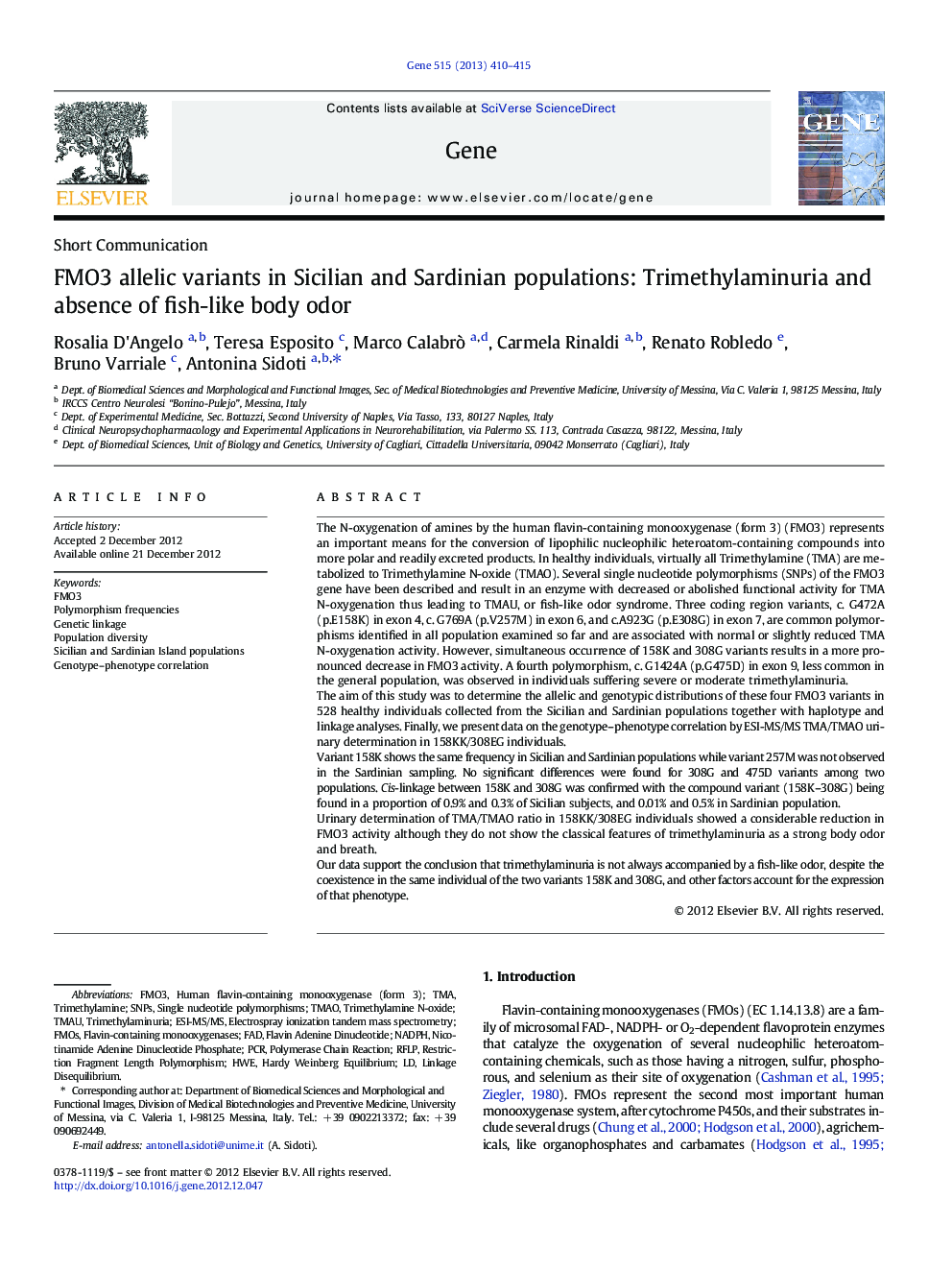| کد مقاله | کد نشریه | سال انتشار | مقاله انگلیسی | نسخه تمام متن |
|---|---|---|---|---|
| 5906919 | 1159991 | 2013 | 6 صفحه PDF | دانلود رایگان |

The N-oxygenation of amines by the human flavin-containing monooxygenase (form 3) (FMO3) represents an important means for the conversion of lipophilic nucleophilic heteroatom-containing compounds into more polar and readily excreted products. In healthy individuals, virtually all Trimethylamine (TMA) are metabolized to Trimethylamine N-oxide (TMAO). Several single nucleotide polymorphisms (SNPs) of the FMO3 gene have been described and result in an enzyme with decreased or abolished functional activity for TMA N-oxygenation thus leading to TMAU, or fish-like odor syndrome. Three coding region variants, c. G472A (p.E158K) in exon 4, c. G769A (p.V257M) in exon 6, and c.A923G (p.E308G) in exon 7, are common polymorphisms identified in all population examined so far and are associated with normal or slightly reduced TMA N-oxygenation activity. However, simultaneous occurrence of 158K and 308G variants results in a more pronounced decrease in FMO3 activity. A fourth polymorphism, c. G1424A (p.G475D) in exon 9, less common in the general population, was observed in individuals suffering severe or moderate trimethylaminuria.The aim of this study was to determine the allelic and genotypic distributions of these four FMO3 variants in 528 healthy individuals collected from the Sicilian and Sardinian populations together with haplotype and linkage analyses. Finally, we present data on the genotype-phenotype correlation by ESI-MS/MS TMA/TMAO urinary determination in 158KK/308EG individuals.Variant 158K shows the same frequency in Sicilian and Sardinian populations while variant 257M was not observed in the Sardinian sampling. No significant differences were found for 308G and 475D variants among two populations. Cis-linkage between 158K and 308G was confirmed with the compound variant (158K-308G) being found in a proportion of 0.9% and 0.3% of Sicilian subjects, and 0.01% and 0.5% in Sardinian population.Urinary determination of TMA/TMAO ratio in 158KK/308EG individuals showed a considerable reduction in FMO3 activity although they do not show the classical features of trimethylaminuria as a strong body odor and breath.Our data support the conclusion that trimethylaminuria is not always accompanied by a fish-like odor, despite the coexistence in the same individual of the two variants 158K and 308G, and other factors account for the expression of that phenotype.
⺠FMO3 allele frequency of p.E158K, V257M, E308G, G475D in Sicily and Sardinia is given. ⺠158K is like in two islands, 308G-475D are higher in Sardinia, where 257M is absent. ⺠We confirmed cis-linkage between 158K and 308G variants, already elsewhere reported. ⺠TMA/TMAO urinary determination is performed in 158KK/308EG and 158EE/308EE subjects. ⺠Data confirm that trimethylaminuria is not always accompanied by a fishlike odor.
Journal: Gene - Volume 515, Issue 2, 25 February 2013, Pages 410-415